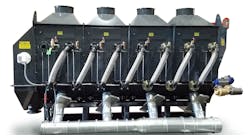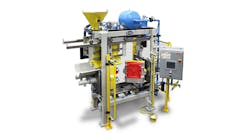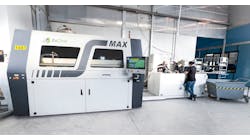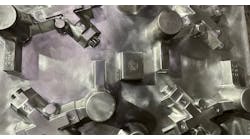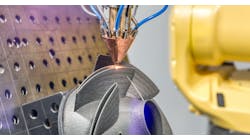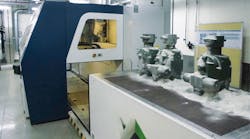Bosch Rexroth AG is a manufacturer that describes itself as “an engineering firm,” putting the emphasis on the research and design work it does, as well as on the service it provides to larger manufacturers in need of the hydraulic, electric, linear motion, and pneumatic systems it develops — and many of the components that form those systems. That detail is signifcant, because Bosch Rexroth has manufacturing objectives, too: its operations include a ferrous foundry at Lohr am Main, Germany, where the organization has been pouring castings since the 1850s.
Now, however, with the organization’s focus on designs and finished products, producing prototype parts and short runs is an increasingly important aspect of the foundry’s work.
In hydraulics, newer designs that match the functional demands of customers calls for castings with greater complexity, and that perform in new ways. Meeting such expectations calls for flexibility and cost-consciousness by the Bosch Rexroth foundry. 3D printing technology helps it to operate on those terms.
Standard core-shooting technology presented limitations for what the Lohr foundry hoped to accomplish. In place of that process, the foundry has adopted two ExOne Corporation additive manufacturing systems to produce prototype designs quickly, as well as to manufacture cores for short production runs.
These units make it possible to execute complex geometries and shapes, and at the same time compress the time needed to proceed from design to finish product. There are operating cost savings, too. Thus, the foundry is able to complete short runs and produce spare parts more efficiently and economically.
Two printing techniques are in use: one uses furan resin and another uses phenol resin, the latter being a new development for additive manufacturing. In this case, the foundry and the machine builder researched ways to make the process consistent for everyday use. Both partners can claim to have pioneered this aspect of additive manufacturing, according to Bosch Rexroth.
No Geometric Limits
Precision dimensions and shapes, such as small channels, can be produced with the 800 N/cm2 achieved in the phenol resin process. The less expensive, furan resin procedure (250 N/cm2) is used for less demanding geometries.
In both processes, data describing the shape to be created is transferred via program software directly to the printer. Any desired number of components of different shapes can be programmed and produced simultaneously, the only limitation being the space available in the printing chamber.
Printing is carried out in 0.28-mm thick layers. In the solid areas of the core, the printing head deposits a binder on sand that has been mixed with the curing agent. The printer requires 30 seconds per layer, and builds the complete three-dimensional shape of the core layer by layer.
The 3D printer is free of the geometric limitations of core shooting, since printing is possible in every direction. In addition, even before the start of volume production, additive cores can be used to optimize sequences in the casting process, for trial assembly of the core, and for analysis of the cores’ effectiveness in the molding process. This lets customers test new cast components more efficiently.
Moreover, the core geometry is much easier to adjust during prototype development, or for new products, without having to prepare a new tool for every modification.
Thus, additive manufacturing helps Bosch Rexroth to respond to customers’ inquiries quickly, and flexibly, within the objectives of its own production program. It’s noteworthy that the numbers of variations in cast products are increasing steadily, and the number of items produced for each variation is decreasing. When manufacturing prototypes and short runs, additive manufacturing lets foundries develop and produce molds and cores without tooling, with the result that every geometric variation can be manufactured almost as immediately as it can be defined.




